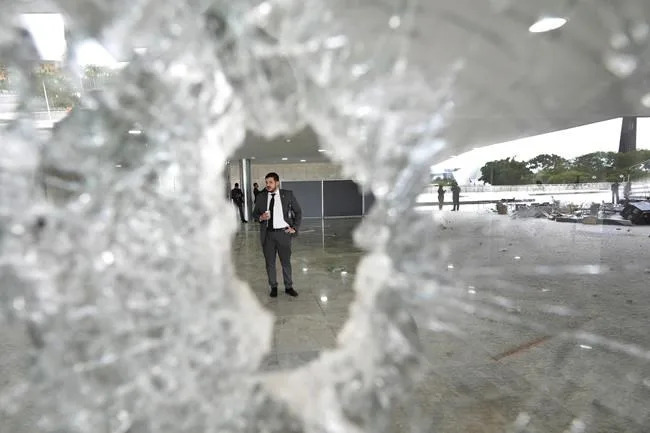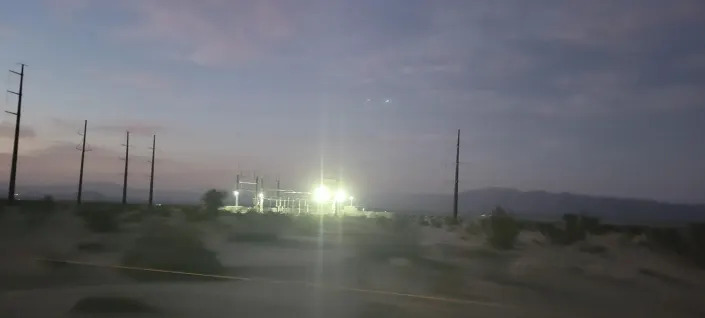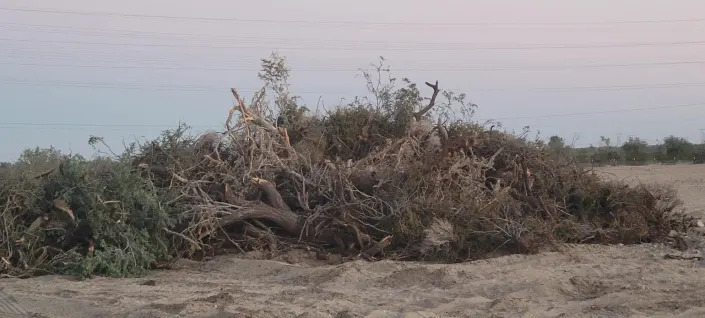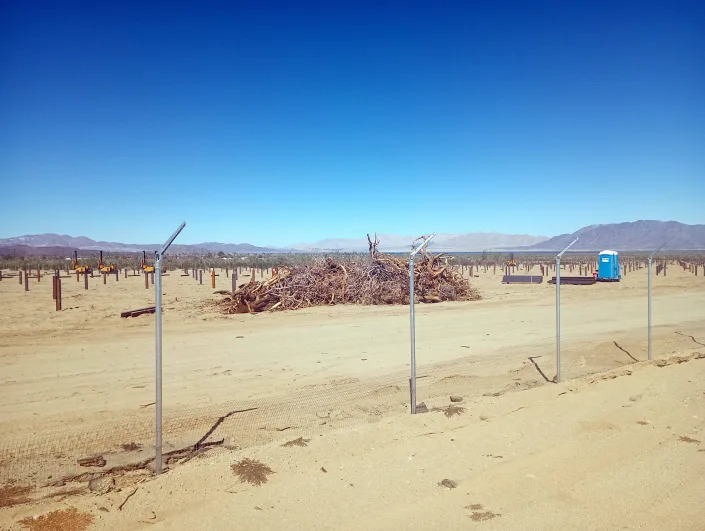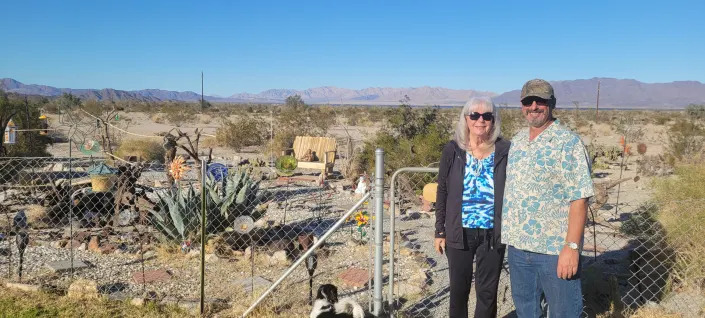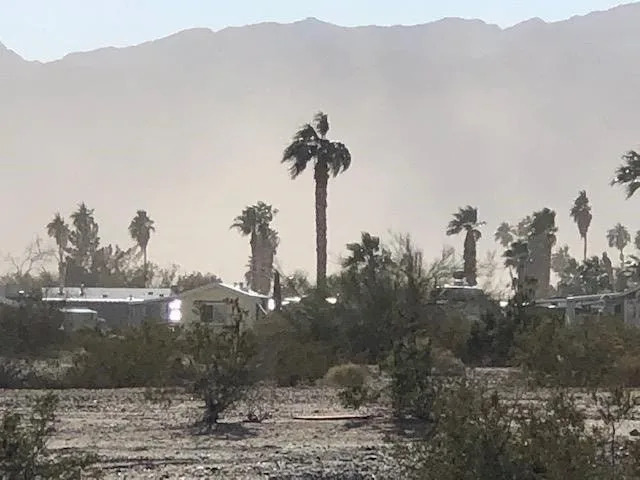Mon, January 9, 2023

LONDON (AP) — A mission to launch the first satellites into orbit from Western Europe suffered an “anomaly” Tuesday, Virgin Orbit said.
The U.S.-based company attempted its first international launch on Monday, using a modified jumbo jet to carry one of its rockets from Cornwall in southwestern England to the Atlantic Ocean where the rocket was released. The rocket was supposed to take nine small satellites for mixed civil and defense use into orbit.
But about two hours after the plane took off, the company reported that the mission encountered a problem.
“We appear to have an anomaly that has prevented us from reaching orbit. We are evaluating the information,” Virgin Orbit said on Twitter.
Virgin Orbit, which is listed on the NASDAQ stock exchange, was founded by British billionaire Richard Branson. It has previously completed four similar launches from California.
Hundreds gathered for the launch cheered earlier as a repurposed Virgin Atlantic Boeing 747 aircraft, named “Cosmic Girl,” took off from Cornwall late Monday. Around an hour into the flight, the plane released the rocket at around 35,000 feet (around 10,000 meters) over the Atlantic Ocean to the south of Ireland.
The plane, piloted by a Royal Air Force pilot, returned to Cornwall after releasing the rocket.
Some of the satellites are meant for U.K. defense monitoring, while others are for businesses such as those working in navigational technology. One Welsh company is looking to manufacture materials such as electronic components in space.
U.K. officials had high hopes for the mission. Ian Annett, deputy chief executive at the U.K. Space Agency, said Monday it marked a “new era” for his country's space industry. There was strong market demand for small satellite launches, Annett said, and the U.K. has ambitions to be ”the hub of European launches."
In the past, satellites produced in the U.K. had to be sent to spaceports in other countries to make their journey into space.
The mission was a collaboration between the U.K. Space Agency, the Royal Air Force, Virgin Orbit and Cornwall Council.
The launch was originally planned for late last year, but it was postponed because of technical and regulatory issues.
Sylvia Hui, The Associated Press
UK rocket launches robot factory to forge cutting-edge alloys in space
Sarah Knapton
Mon, January 9, 2023

LauncherOne rocket containing the ForgeStar satellite is attached to wing of former Virgin Atlantic 747 - UK Space Agency/PA Wire
The Welsh have a proud history of cutting-edge metalworking.
So it may come as no surprise Wales’ first satellite is a robotic space factory, capable of forging alloys and other materials which are impossible to make on Earth.
Welsh startup Space Forge was due to launch its ForgeStar-0 satellite on board Virgin Orbit’s ‘Start Me Up’ mission from Spaceport Cornwall in Newquay on Monday evening.
The inaugural trip into Low Earth Orbit will test the satellite’s ability to return to Earth, but subsequent satellites will autonomously manufacture metal alloys, electronic components and even pharmaceuticals over several months, before bringing them home.
Creating materials in space has major advantages, because there is no oxygen, very cold temperatures and microgravity.
Under such perfect conditions, the suitcase-sized space factory should be able to produce better and lighter metal alloys than can be created currently on Earth, where gravity can cause the metals to separate into two layers, with the densest at the bottom.
It could also usher in a new era of flawless semiconductors, which are found in electronic devices, from mobile phones and televisions to refrigerators and computers.

At around 35,000ft the LauncherOne rocket detaches and launches into space, discharging its cargo when it reaches orbit - UK Space Agency/PA Wire
Semiconductors are made from crystal lattices of molten silicon, but the gravity of Earth can cause defects which impact performance.
Making them in space could dramatically improve the quality of silicon crystals, the company believes, which could extend the lifespans for everyday equipment.
A space factory can also work in temperatures close to absolute zero, which allows for ultra-fast ‘curing’ and again avoids flaws. The manufacturing will take a few months, before the precious space-built cargo is brought back down to Earth.
Space Forge co-founder Joshua Western said: “It will be the world’s first fully returnable and re-launchable satellite platform to create materials in space which are impossible to manufacture on Earth.
“Space Forge will leverage the benefits of the space environment, namely microgravity, vacuum and temperature.”
Virgin Orbit was scheduled to make its inaugural UK flight shortly before 10pm on Monday evening in the first historic lift-off from British soil.
Unlike traditional vertical launches, the ‘LauncherOne’ rocket containing the ForgeStar satellite and eight others is attached to a wing of a former Virgin Atlantic 747 passenger plane - dubbed ‘Cosmic Girl.’
The plane takes off as normal, and at around 35,000ft the rocket detaches and launches into space, discharging its cargo when it reaches orbit.
Newquay Airport was chosen as Britain’s first spaceport because it had a runway suitable for 747 aircraft, and a flight path close to the sea, in case of mishaps.
Other satellites making their maiden voyage include Open Cosmos’ DOVER-Pathfinder satellite.
Named after the Dover Strait, the narrowest part of the English Channel which has the densest shipping lanes, the satellite will help craft navigate the waters.
University College London (UCL) is also sending up two tiny instruments aimed at monitoring space weather and its effects on the Earth’s atmosphere as part of the CIRCE mission.
Usually Earth is protected by its magnetic field and even when solar storms penetrate they are usually only responsible for the spectacular auroras seen at the North and South Poles.
It is the more violent outbursts which can be catastrophic. The most severe incident - known as ‘the Carrington Event’ - happened in 1859, shorting telegraph circuits, starting fires and causing the Northern Lights to dance in the sky as far south as Hawaii.
If it happened today researchers estimate there is a 71 per cent chance the British power grid would be affected, while mobile phone reception could die, and airlines would be grounded without GPS.
The CIRCE mission consists of two nano satellites known as CubeSats, which each contain an instrument, and will fly in tandem 344 miles above the Earth’s surface.
Professor Anasuya Aruliah (UCL Physics & Astronomy), part of the science team who will be analysing the data from CIRCE, said: “Predicting space weather requires constant monitoring of the sun through to the response of the Earth’s environment.
“Meteorological weather forecasting relies on a worldwide network of weather balloons launched every 12 hours.
“The CIRCE mission will provide some of the first ever ‘space weather balloons’ to provide high spatial resolution in-situ measurements for research and forecasting models.”
Western Europe's first satellite launch mission takes off






UK's First launch of Virgin Orbit's LauncherOne rocket in Newquay
Mon, January 9, 2023
By Paul Sandle
NEWQUAY, England (Reuters) -Virgin Orbit's "Cosmic Girl" carrier aircraft took off from Newquay's spaceport in Cornwall on Monday night, the initial stage of Western Europe's first ever satellite launch.
The modified Boeing 747 with a rocket under its wing took to the air and then soared out over the Atlantic Ocean, where after an hour the LauncherOne rocket with a payload of nine small satellites will be released at 35,000 feet (10,670 meters).
Virgin Orbit, part-owned by British billionaire Richard Branson, said the satellites would be deployed into lower Earth orbit (LEO) in its first mission outside its United States base.
More than 2,000 space fans cheered when the aircraft lifted from the runway in the seaside resort in southwest England.
The "horizontal" launch in Newquay - population 20,000 and famous for its reliable Atlantic waves - enabled Britain to beat Sweden, Norway and others in launching orbital satellites.
Britain's Minister for Science George Freeman said it was a historic moment.
"Assuming all goes according to plan, we will have won the European Space Race and be the first country to launch satellites from Europe," he told Reuters before take-off.
"We are sending a big signal tonight that we are intent on being a force in the space economy of tomorrow."
The new spaceport will launch small satellites at a critical time after the Ukraine war cut access to its use of Russian Soyuz vehicles. The European Space Agency's (ESA) Ariane 6 rocket, which launches from Kourou in French Guiana, is designed to carry large satellites and has also had delays.
The Ukraine war has highlighted the importance for tactical military purposes of smaller satellites, like those being launched from Newquay, which can get into low orbit at much shorter notice than bigger ones.
The UK Space Agency said it would be a moment of national pride for Britain's growing space industry.
Deputy Chief Executive Ian Annett said more small satellites were built in Britain than anywhere outside of the United States, and the country hosted operation centres for companies like Inmarsat.
"So we have the full spectrum except launch," he told Reuters. "If you have launch, you have everything."
The mission, called "Start Me Up" after the Rolling Stones track, will deploy breakfast cereal boxes-sized satellites to fulfil tasks such as maritime research and detecting illegal fishing, as well as national security, Virgin Orbit said.
The company has previously launched from California. Chief Executive Dan Hart said the protocols would stay the same, joking to reporters: "Pasties versus hamburgers, it's a significant shift."
He added that partnerships with the UK Space Agency, Spaceport Cornwall, the British aviation regulator and the Royal Air Force had made the launch possible.
START ME UP
Space enthusiasts with tickets for the launch secured positions in a viewing area as rock group Europe's "Final Countdown" blasted from loudspeakers on Monday evening.
Retired teacher Pauline Clifton, who had come from Falmouth in the south of the county, said she was always confident that the spaceport would come to fruition. "To be leading the way in anything is quite something for Cornwall," she said.
Virgin Orbit's focus on LEO satellites is at the other end of the scale from the large satellites in geostationary orbit that are launched by vertical rockets.
UKSA's Annett said the LEO economy had boomed in recent years, noting Jeff Bezos' Kuiper Systems and Elon Musk's rival Starlink constellations.
But he said smaller satellites were also doing vital research in climate change, and they were a growing opportunity for an industry employing 47,000 people and worth 16.5 billion pounds ($20.09 billion) a year in Britain.
Getting the mission off the ground has taken time. It was delayed from late last year due to the myriad regulatory clearances needed for the inaugural flight.
Virgin Orbit Shares Readiness For UK Rocket Launch
Anusuya Lahiri
Mon, January 9, 2023

Virgin Orbit Holdings, Inc (NASDAQ: VORB) shared its readiness for the Start Me Up mission for a historic U.K. launch on January 9.
Start Me Up is a collaborative effort between the U.K. Space Agency (UKSA), Cornwall Council, the Royal Air Force, and Virgin Orbit.
The Start Me Up mission will carry satellites from seven customers to space, including commercial and government payloads from several nations and a collaborative U.S.-U.K. mission.
The LauncherOne system that will conduct the mission is now a modified Boeing Co (NYSE: BA) 747, dubbed Cosmic Girl, at Spaceport Cornwall.
Virgin Orbit's LauncherOne system completed an end-to-end launch rehearsal verifying the system's health and readiness of the team.
Ian Annett, Deputy CEO at the U.K. Space Agency, said: "The development of new orbital launch capabilities is already generating growth, catalyzing investment, and creating jobs in Cornwall and other communities across the United Kingdom. This will lead to new careers, improved productivity, and inspire the next generation of space professionals, and this is just the beginning."
Virgin Orbit, which usually operates from the Mojave Desert, put plans for a pre-Christmas U.K. launch on hold amid last-minute snags, Bloomberg reports
Sarah Knapton
Mon, January 9, 2023

LauncherOne rocket containing the ForgeStar satellite is attached to wing of former Virgin Atlantic 747 - UK Space Agency/PA Wire
The Welsh have a proud history of cutting-edge metalworking.
So it may come as no surprise Wales’ first satellite is a robotic space factory, capable of forging alloys and other materials which are impossible to make on Earth.
Welsh startup Space Forge was due to launch its ForgeStar-0 satellite on board Virgin Orbit’s ‘Start Me Up’ mission from Spaceport Cornwall in Newquay on Monday evening.
The inaugural trip into Low Earth Orbit will test the satellite’s ability to return to Earth, but subsequent satellites will autonomously manufacture metal alloys, electronic components and even pharmaceuticals over several months, before bringing them home.
Creating materials in space has major advantages, because there is no oxygen, very cold temperatures and microgravity.
Under such perfect conditions, the suitcase-sized space factory should be able to produce better and lighter metal alloys than can be created currently on Earth, where gravity can cause the metals to separate into two layers, with the densest at the bottom.
It could also usher in a new era of flawless semiconductors, which are found in electronic devices, from mobile phones and televisions to refrigerators and computers.

At around 35,000ft the LauncherOne rocket detaches and launches into space, discharging its cargo when it reaches orbit - UK Space Agency/PA Wire
Semiconductors are made from crystal lattices of molten silicon, but the gravity of Earth can cause defects which impact performance.
Making them in space could dramatically improve the quality of silicon crystals, the company believes, which could extend the lifespans for everyday equipment.
A space factory can also work in temperatures close to absolute zero, which allows for ultra-fast ‘curing’ and again avoids flaws. The manufacturing will take a few months, before the precious space-built cargo is brought back down to Earth.
Space Forge co-founder Joshua Western said: “It will be the world’s first fully returnable and re-launchable satellite platform to create materials in space which are impossible to manufacture on Earth.
“Space Forge will leverage the benefits of the space environment, namely microgravity, vacuum and temperature.”
Virgin Orbit was scheduled to make its inaugural UK flight shortly before 10pm on Monday evening in the first historic lift-off from British soil.
Unlike traditional vertical launches, the ‘LauncherOne’ rocket containing the ForgeStar satellite and eight others is attached to a wing of a former Virgin Atlantic 747 passenger plane - dubbed ‘Cosmic Girl.’
The plane takes off as normal, and at around 35,000ft the rocket detaches and launches into space, discharging its cargo when it reaches orbit.
Newquay Airport was chosen as Britain’s first spaceport because it had a runway suitable for 747 aircraft, and a flight path close to the sea, in case of mishaps.
Other satellites making their maiden voyage include Open Cosmos’ DOVER-Pathfinder satellite.
Named after the Dover Strait, the narrowest part of the English Channel which has the densest shipping lanes, the satellite will help craft navigate the waters.
University College London (UCL) is also sending up two tiny instruments aimed at monitoring space weather and its effects on the Earth’s atmosphere as part of the CIRCE mission.
Usually Earth is protected by its magnetic field and even when solar storms penetrate they are usually only responsible for the spectacular auroras seen at the North and South Poles.
It is the more violent outbursts which can be catastrophic. The most severe incident - known as ‘the Carrington Event’ - happened in 1859, shorting telegraph circuits, starting fires and causing the Northern Lights to dance in the sky as far south as Hawaii.
If it happened today researchers estimate there is a 71 per cent chance the British power grid would be affected, while mobile phone reception could die, and airlines would be grounded without GPS.
The CIRCE mission consists of two nano satellites known as CubeSats, which each contain an instrument, and will fly in tandem 344 miles above the Earth’s surface.
Professor Anasuya Aruliah (UCL Physics & Astronomy), part of the science team who will be analysing the data from CIRCE, said: “Predicting space weather requires constant monitoring of the sun through to the response of the Earth’s environment.
“Meteorological weather forecasting relies on a worldwide network of weather balloons launched every 12 hours.
“The CIRCE mission will provide some of the first ever ‘space weather balloons’ to provide high spatial resolution in-situ measurements for research and forecasting models.”
Western Europe's first satellite launch mission takes off






UK's First launch of Virgin Orbit's LauncherOne rocket in Newquay
Mon, January 9, 2023
By Paul Sandle
NEWQUAY, England (Reuters) -Virgin Orbit's "Cosmic Girl" carrier aircraft took off from Newquay's spaceport in Cornwall on Monday night, the initial stage of Western Europe's first ever satellite launch.
The modified Boeing 747 with a rocket under its wing took to the air and then soared out over the Atlantic Ocean, where after an hour the LauncherOne rocket with a payload of nine small satellites will be released at 35,000 feet (10,670 meters).
Virgin Orbit, part-owned by British billionaire Richard Branson, said the satellites would be deployed into lower Earth orbit (LEO) in its first mission outside its United States base.
More than 2,000 space fans cheered when the aircraft lifted from the runway in the seaside resort in southwest England.
The "horizontal" launch in Newquay - population 20,000 and famous for its reliable Atlantic waves - enabled Britain to beat Sweden, Norway and others in launching orbital satellites.
Britain's Minister for Science George Freeman said it was a historic moment.
"Assuming all goes according to plan, we will have won the European Space Race and be the first country to launch satellites from Europe," he told Reuters before take-off.
"We are sending a big signal tonight that we are intent on being a force in the space economy of tomorrow."
The new spaceport will launch small satellites at a critical time after the Ukraine war cut access to its use of Russian Soyuz vehicles. The European Space Agency's (ESA) Ariane 6 rocket, which launches from Kourou in French Guiana, is designed to carry large satellites and has also had delays.
The Ukraine war has highlighted the importance for tactical military purposes of smaller satellites, like those being launched from Newquay, which can get into low orbit at much shorter notice than bigger ones.
The UK Space Agency said it would be a moment of national pride for Britain's growing space industry.
Deputy Chief Executive Ian Annett said more small satellites were built in Britain than anywhere outside of the United States, and the country hosted operation centres for companies like Inmarsat.
"So we have the full spectrum except launch," he told Reuters. "If you have launch, you have everything."
The mission, called "Start Me Up" after the Rolling Stones track, will deploy breakfast cereal boxes-sized satellites to fulfil tasks such as maritime research and detecting illegal fishing, as well as national security, Virgin Orbit said.
The company has previously launched from California. Chief Executive Dan Hart said the protocols would stay the same, joking to reporters: "Pasties versus hamburgers, it's a significant shift."
He added that partnerships with the UK Space Agency, Spaceport Cornwall, the British aviation regulator and the Royal Air Force had made the launch possible.
START ME UP
Space enthusiasts with tickets for the launch secured positions in a viewing area as rock group Europe's "Final Countdown" blasted from loudspeakers on Monday evening.
Retired teacher Pauline Clifton, who had come from Falmouth in the south of the county, said she was always confident that the spaceport would come to fruition. "To be leading the way in anything is quite something for Cornwall," she said.
Virgin Orbit's focus on LEO satellites is at the other end of the scale from the large satellites in geostationary orbit that are launched by vertical rockets.
UKSA's Annett said the LEO economy had boomed in recent years, noting Jeff Bezos' Kuiper Systems and Elon Musk's rival Starlink constellations.
But he said smaller satellites were also doing vital research in climate change, and they were a growing opportunity for an industry employing 47,000 people and worth 16.5 billion pounds ($20.09 billion) a year in Britain.
Getting the mission off the ground has taken time. It was delayed from late last year due to the myriad regulatory clearances needed for the inaugural flight.
Virgin Orbit Shares Readiness For UK Rocket Launch
Anusuya Lahiri
Mon, January 9, 2023

Virgin Orbit Holdings, Inc (NASDAQ: VORB) shared its readiness for the Start Me Up mission for a historic U.K. launch on January 9.
Start Me Up is a collaborative effort between the U.K. Space Agency (UKSA), Cornwall Council, the Royal Air Force, and Virgin Orbit.
The Start Me Up mission will carry satellites from seven customers to space, including commercial and government payloads from several nations and a collaborative U.S.-U.K. mission.
The LauncherOne system that will conduct the mission is now a modified Boeing Co (NYSE: BA) 747, dubbed Cosmic Girl, at Spaceport Cornwall.
Virgin Orbit's LauncherOne system completed an end-to-end launch rehearsal verifying the system's health and readiness of the team.
Ian Annett, Deputy CEO at the U.K. Space Agency, said: "The development of new orbital launch capabilities is already generating growth, catalyzing investment, and creating jobs in Cornwall and other communities across the United Kingdom. This will lead to new careers, improved productivity, and inspire the next generation of space professionals, and this is just the beginning."
Virgin Orbit, which usually operates from the Mojave Desert, put plans for a pre-Christmas U.K. launch on hold amid last-minute snags, Bloomberg reports



